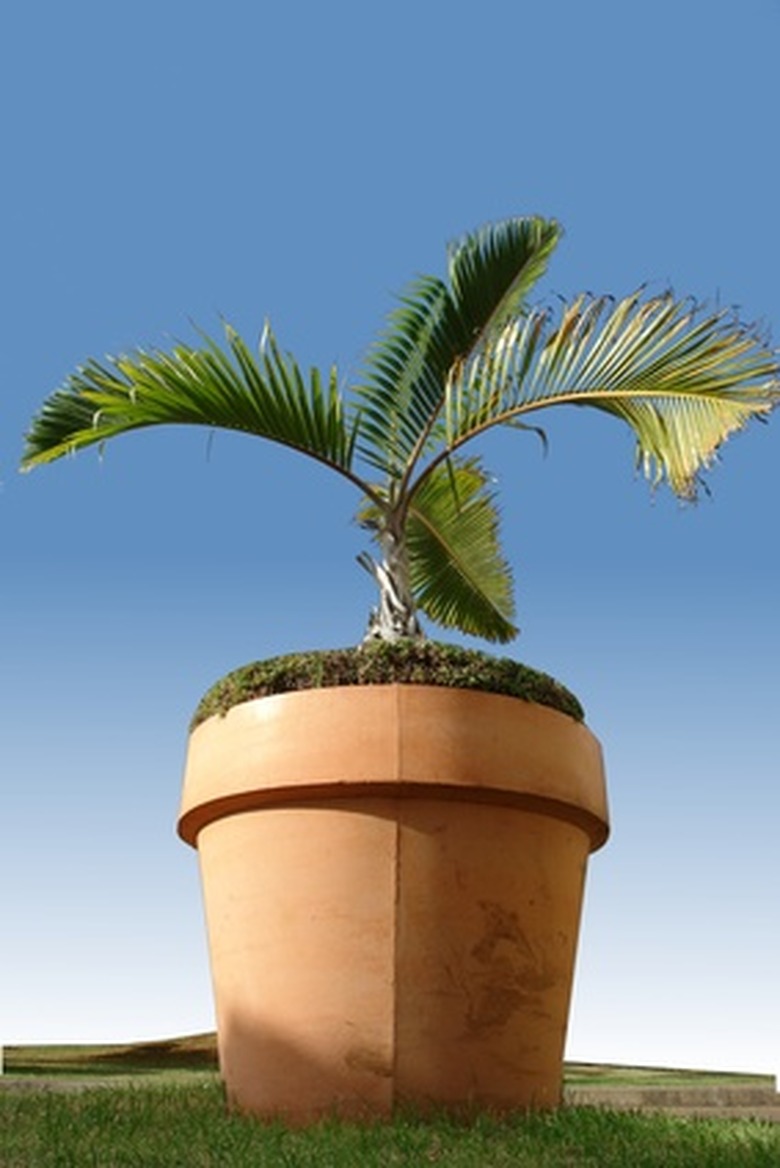How To Trim Indoor Palm Trees
An indoor palm tree can bring a small piece of the tropics into your household, but without proper trimming, it can start to look a little shabby. Aside from looking a little rough around the edges, the tree will also grow unchecked in your home until it becomes too large to comfortably fit inside your home. Use caution when you trim a palm, though, or you can cause lasting damage to the palm tree–even kill it.
Step 1
Prepare your palm tree by fertilizing it a week before you start the trimming process. The fertilizer will help prevent the palm tree from going into shock after you trim.
Step 2
Move your tree outdoors or lay a tarp below its pot to help protect your floor from the dead fronds you trim off.
Step 3
Examine the tree for dead or diseased palm tree fronds that have completely turned brown. These are the first fronds you must remove from the palm tree. Cut them off at the base of the tree.
- An indoor palm tree can bring a small piece of the tropics into your household, but without proper trimming, it can start to look a little shabby.
Step 4
Shear off any growths near the base of the palm tree. This keeps your indoor palm tree looking uniform and attractive.
Step 5
Lightly trim away the browned tips of any fronds that still look healthy. Cut the browning tips in an arch so the frond retains its fan-like shape.
Trim A Palm
Look for dead or broken palms that are hanging parallel to the ground. Do not remove half-dead or discolored leaves because they provide potassium if it is lacking in the soil. If the tree is small, first concentrate on the palms that are lowest to the ground. Put on protective gear, especially if the tree is tall and palms will fall a great distance before reaching the ground. Wear eye goggles and secure a hard hat. A palm's sharp spine and thorns can cause serious injury. According to a study from John Ball, a South Dakota State University forestry professor, a danger in palm trimming is dead fronds that come loose on unguarded tree trimmers. Close the handles and cut. Trim the petticoat skirt of dead fronds, around the crown, by placing the pruner as close to the fan palm as possible and cutting. If fronds do not easily detach, cut them with pruners.
- Look for dead or broken palms that are hanging parallel to the ground.
- According to a study from John Ball, a South Dakota State University forestry professor, a danger in palm trimming is dead fronds that come loose on unguarded tree trimmers.
Trim A Palm
Look for dead or broken palms that are hanging parallel to the ground. Do not remove half-dead or discolored leaves because they provide potassium if it is lacking in the soil. If the tree is small, first concentrate on the palms that are lowest to the ground. Put on protective gear, especially if the tree is tall and palms will fall a great distance before reaching the ground. Wear eye goggles and secure a hard hat. A palm's sharp spine and thorns can cause serious injury. According to a study from John Ball, a South Dakota State University forestry professor, a danger in palm trimming is dead fronds that come loose on unguarded tree trimmers. Close the handles and cut. Trim the petticoat skirt of dead fronds, around the crown, by placing the pruner as close to the fan palm as possible and cutting. If fronds do not easily detach, cut them with pruners.
- Look for dead or broken palms that are hanging parallel to the ground.
- According to a study from John Ball, a South Dakota State University forestry professor, a danger in palm trimming is dead fronds that come loose on unguarded tree trimmers.
Things Needed
- Fertilizer
- Tarp
- Shears
- Gardening clippers
